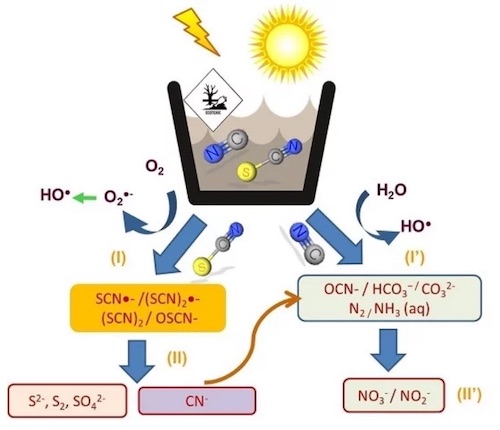Ask for a reprint
email :
* Give your email
2019
ACL
|
J.Juan Viña Mediavilla, Begoña Fernandez Perez, Maria C.Fernandez de Cordoba, Julia Ayala Espina, Conchi O.Ania, 'Photochemical Degradation of Cyanides and Thiocyanates from an Industrial Wastewater', Molecules 24 (2019) doi:10.3390/molecules24071373
We have explored the simultaneous degradation of cyanides and thiocyanate present in wastewaters from a cokemaking factory using photoassisted methods under varied illumination conditions (from simulated solar light to UV light). Overall, the photochemical degradation of cyanides was more efficient than that of thiocyanates, regardless of the illumination conditions, the effect being more pronounced in the absence of a photocatalyst. This is due to their different degradation mechanism that in the case of thiocyanates is dominated by fast recombination reactions and/or charge transfer reactions to electron scavengers. In all cases, cyanate, ammonia, nitrates, and nitrites were formed at different amounts depending on the illumination conditions. The conversion yield under simulated solar light was almost complete for cyanides and quite high for thiocyanates after 6 h of illumination. Regarding toxicity, photochemical oxidation at 254 nm and under simulated solar light decreased significantly the toxicity of the pristine wastewater, showing a correlation with the intensity of the irradiation source. This indicate that simulated light can be effectively used to reduce the toxicity of industrial effluents, opening an interesting perspective for optimizing cyanide detoxification systems based on natural light.
|

|